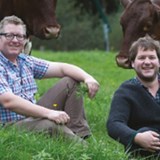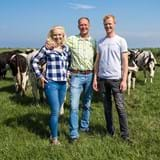Many livestock producers are passionate about the health and welfare of the animals on which their livelihoods depend – and they have found that focusing on and improving animal health and welfare has profound, positive effects on productivity and profitability. So as research and science improve our understanding of animal behavior, we strive to adapt our systems and practices to make best use of this information.
Focusing on animal welfare indicators and outcomes will help us make better decisions in how we manage our livestock to improve their health, welfare and productivity. Taking responsibility for the animals in our care begins by focusing on these fundamental areas:
- Provide access to fresh water and proper nutrition to maintain health and well-being.
- Provide an appropriate environment including shelter and a comfortable resting area.
- Provide rapid diagnosis and treatment of pain, injury or disease.
- Provide sufficient space, proper facilities and company of the animal’s own kind to allow it to express normal behaviors.
- Provide conditions and treatment that minimize or eliminate stress or mental suffering.
Preventive care and responsible antibiotic use
Understanding disease pressures that are likely to affect our animals and implementing proper preventive care through a well-defined and thorough health plan will improve the health and well-being of the animals in our care. Health planning and preventive care is a crucial component for minimizing antibiotic use, which is key if we are to address the emerging issue of antimicrobial resistance in people and animals. Responsible antibiotic use also means we need to look at our systems and management, giving rise to opportunities to improve the sustainability of livestock production.
Animal husbandry is a big part of everyday animal care. Understanding animal behavior and utilizing that knowledge when handling livestock is increasingly acknowledged as crucial to good animal welfare.
Find out how other McDonald’s producers are innovating on behalf of their animals and improving their business
- Free-access stalls allow cows to move around freely and rubber-covered slats provide non-slip flooring, both of which allow the expression of natural behaviors. Lying areas have rubber mattresses with straw bedding for comfort
- Cow brushes provide facilities for the cows to groom themselves and thermostatically controlled cow showers maintain thermal comfort in summer

- The investment of a new building and facilities, including robotic milking machines allowed the creation of the concept of the “Free Choice Dairy System.” The cows can feed, rest, socialize and be milked based on their preferences as opposed to having a routine imposed on them

- Key Welfare Indicators demonstrate there is no incidence of pododermatitis or hock burn in the farm’s chickens (based on 2015 figures). This is down to optimum ventilation control, the use of straw pellets for litter and good management

